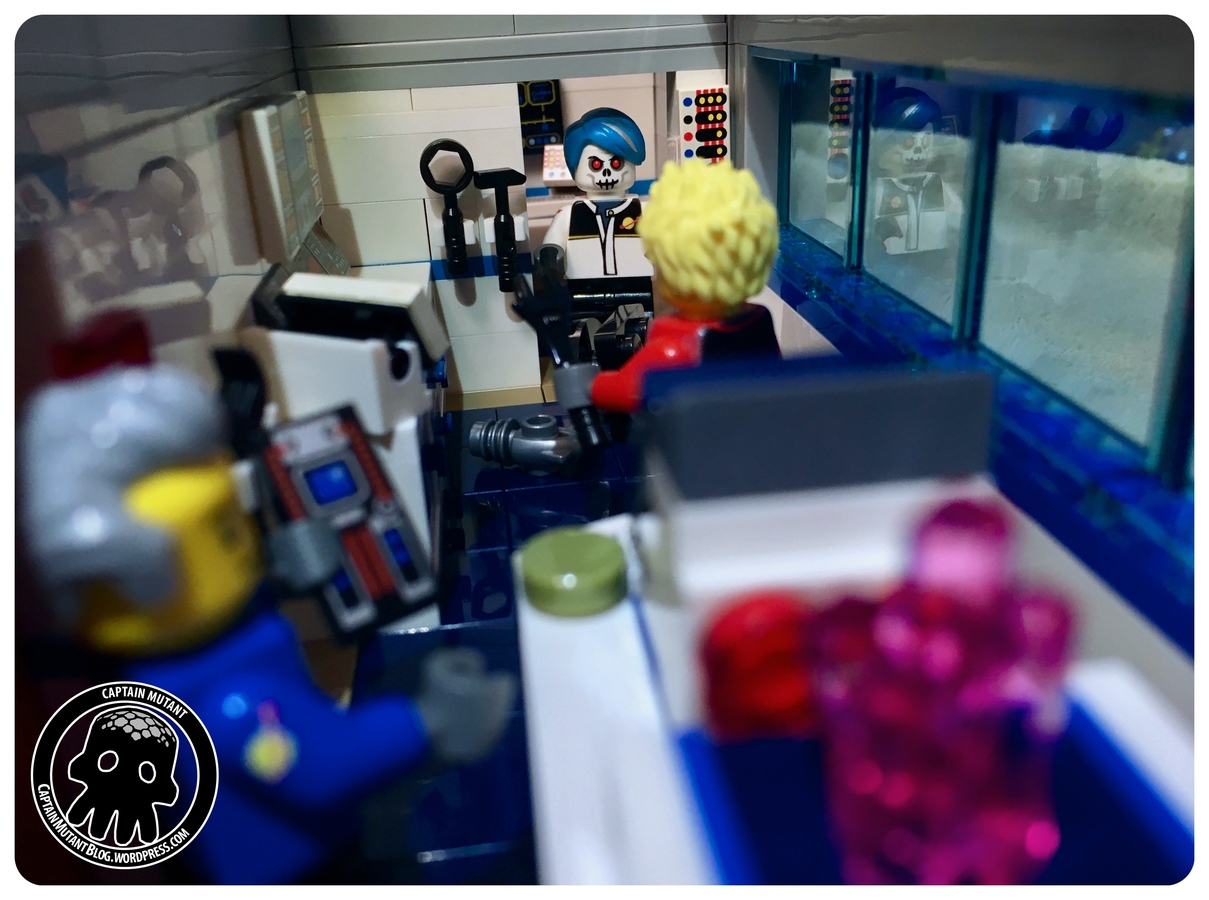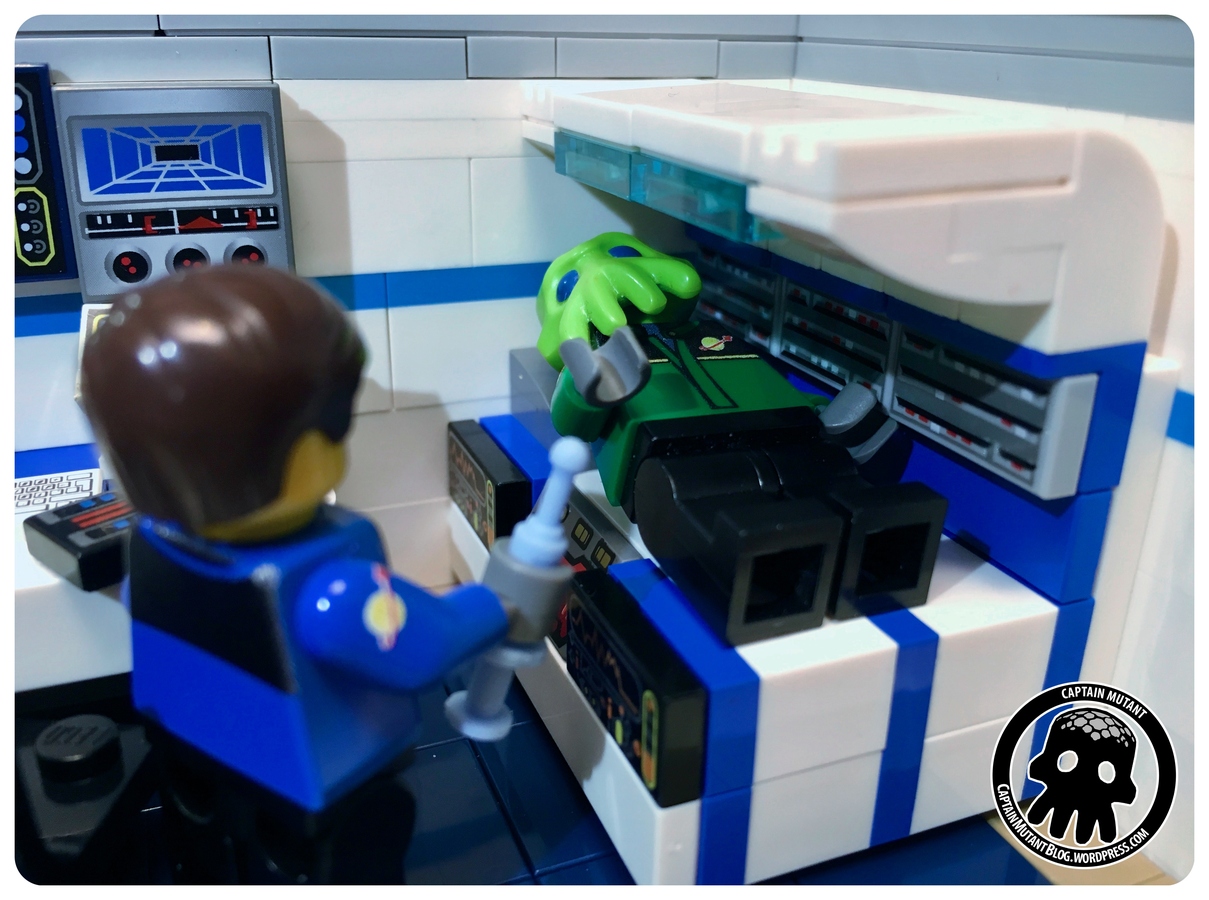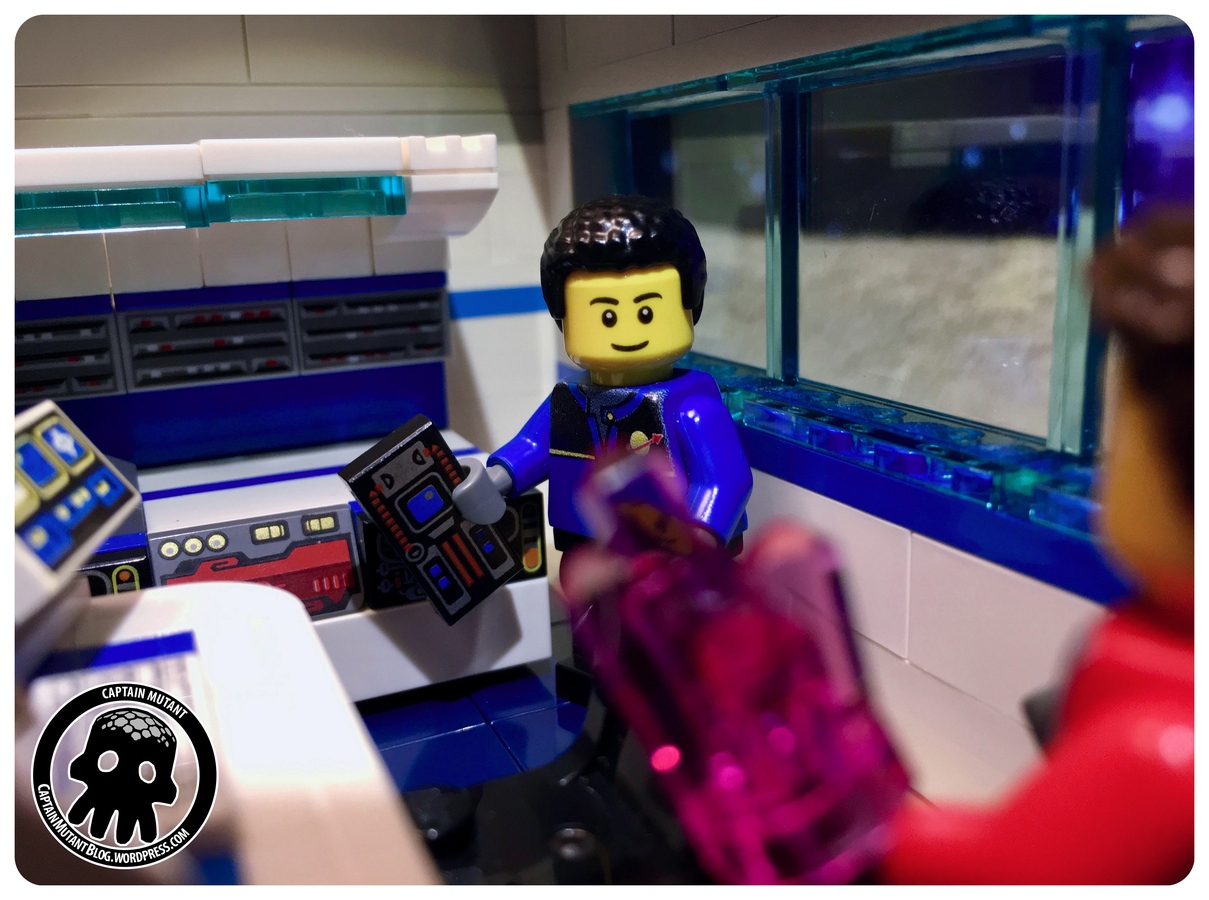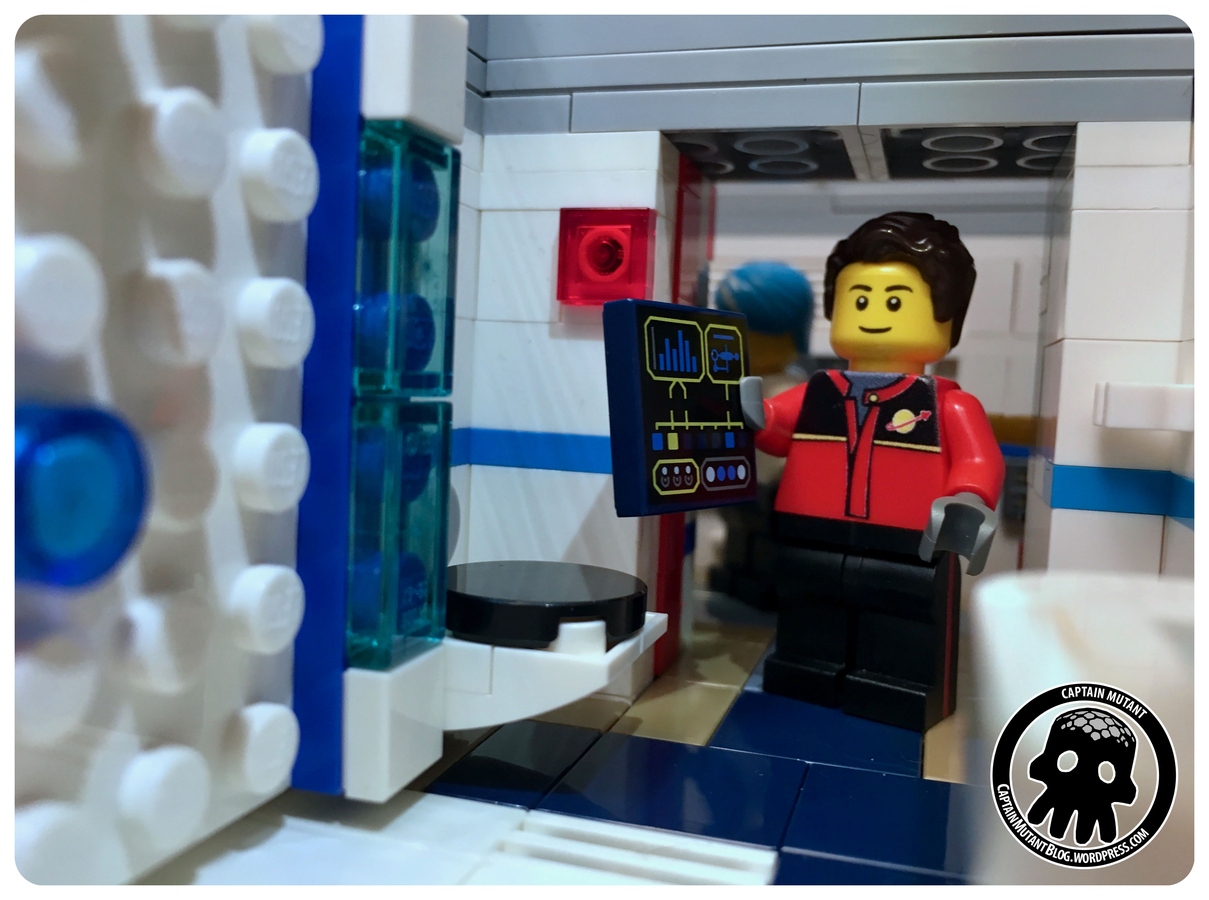The Fall of Planetary Outpost

It’s been a fun ride and a great learning experience. After a little over a year, my project amassed 367 supporters. For a first LEGO Ideas project, heck, for my very first MOC, I think it’s definitely not too shabby.
I would like to thank all of you who liked my project enough to fill in LEGO Idea’s support form, by sharing with you the last photos we were able to get before we lost all contact with Planetary Outpost.






Although the chances of there being any survivors is beyond remote, Classic Space Command feels we need to launch another expedition to figure out what really happened to the crew.
It just so happens that I’ve been working on a subtle yet substantial redesign of the base - keeping the overall shape the same, but increasing the greebling substantially, while sticking to the 1978 piece count.
I’ll be unveiling this revamp in the coming weeks, when we’ll be sending Classic Space minifigs back into LEGO Ideas space!
Until then, thank you so much, keep an eye out, and see you soon! :)
Captain Out.
Talking the Outpost

This weekend a podcast and an AFOL website published stories about my Planetary Outpost.
So big shoutout to The Bricks King, where you can listen to their podcast and see what they have to say about my LEGO Ideas design.
And thank you to Bricks McGee for interviewing me about the creative process behind my Classic Space commemorative creation.
As always, you can see all the photos of the finished product in my online gallery.
And if you like what you see, don’t forget to add your support! This project won't become a reality without your help.
Until the next time,
Captain out.
Colours, Colours

When I started designing Planetary Outpost, my intention was to create something to commemorate Classic Space’s 40th anniversary.
With that in mind I wondered how LEGO would design a futuristic outpost using modern parts and building techniques while still anchoring this project within the Classic Space universe.
So although I created something modern, I peppered the design with nods to previous concepts, like the steps to the airlocks, parts of the communications array, and sprinkled each room with printed tiles from many different eras of the Classic Space theme.
I also modernised the space suits/uniforms, but thought it important to stick to the traditional colours. Red and White because those were the first ones used back in 1978, and Blue as a nice complimentary third option.

But recently I got to thinking, why stick to those colours? The beauty of LEGO is that anything is possible, and if they were do design a modern version of Classic Space, why not experiment with other shades?
After a little bit of poking around the available colour palette of existing LEGO torsos, I settled on Green (because Peter Reid’s Exo Suit), Orange and Grey for the alternative uniforms and space suits. You’ve seen the green one already as it’s the Captain’s favourite uniform, but the others are brand new.

I think all the new uniforms look great in all these colours, but I’m not proposing to replace the original shades. I thought I’d put it out there as an option.
Let me know what you think in the comments. Would you stick to the traditional Red White and Blue, totally replace them with the new choices, or mix and match them (and if so which would be would preferred selection)?

Oh and while I was at it, I got BrickSanity to print me some new Classic Space blue mugs for the crew.

I originally had transparent mugs, but realised while taking photographs of the Galley back in April that it was obvious there was nothing in those mugs! So I thought of using blue mugs instead (Classic Space blue of course), and then I remembered Captain Sulu drinking tea on the bridge of the Excelsior in a branded cup, and the rest, as they say, is history.
As I was taking photos of the crew for this update, I got to thinking about sci-fi. Planetary Outpost is firmly set in the early stages of human space exploration, but what would happen in the future, when humanity takes its place alongside other races and explore the universe together? Thanks to LEGO, I can confirm that the future looks pretty darn good in those uniforms.

(can you recognise all the species?)
Until the next time,
Captain out.
2018… meet 1978

I thought it would be fun to see Planetary Outpost next to the most iconic starship of the entire Classic Space theme, the LL928 Galaxy Explorer!
After a 40 year trip, the classic crew finally meet their modern counterpart, compare technology, acquaint themselves with the wonders of AI, and let the base’s team perform some much needed maintenance on this venerable vessel.
Enjoy
And don’t forget that you can see many more photos of Planetary Outpost in the gallery




Mutant Life in Brick
The duo over at Life in Brick have taken a look at Planetary Outpost.
Some of the choice quotes from that article are
“if like me you’re a fan of 1980s LEGO, then you can’t help but admire the beauty in this homage.”
“There’s definitely a lot to enjoy with this set”
“Opening up the outpost and you can see an impressive mix of modern and retro, with nods to the days of LEGO Space alongside printed panels seen in many of the sets currently on the market today.
The interior is impressively versatile, with five unique configurations designed so that there’s plenty of additional play value with this set, including a Command Centre, Galley, Crew Quarters, Sick Bay, and Engineering. Imagine what you could do with five of these sets.”
It also includes the mention of “a very cool-looking robot”
So head on over to Life in Brick to read all about it.
In the review, Mike made a comparison between the base’s piece count and that of his Millennium Falcon’s. As a thank you, I thought I’d share with you all the time when Han and the team came over to our neck of the galaxy for some trade and R&R.
Until the next time,
Captain out.

Update: Life in Brick also mentions Planetary Outpost in one of their videos! Well worth a watch if I do say so myself ;)
1978

After months of additional work, my modifications to Planetary Outpost are drawing to a close. I started back on Christmas Eve, two months and ten days after I’d submitted my proposal to LEGO Ideas.
Over the course of the last five months, I fixed a pivoting wall and the way airlocks connect to the main building, redesigned the excavation areas, strengthened the underside of the base (which proved invaluable later on), added a recharge station for buggies and robots, altered the buggies so they could take advantage of said recharge facility, replaced some curved underside pieces with some new ones LEGO had just created to improve the base’s rigidity, changed the greebling’s colour on the base’s roof, added windows to two airlocks, and totally redesigned the base’s rooms, starting with the Command Centre, then moving on to the Galley, the Crew Quarters, Sick Bay, and finally, Engineering.
Checking the numbers, I realised that I had used 2,006 pieces to make this set (including a brick separator - an indispensable tool when offering rebuild options as I am). This got me thinking… the Classic Space theme was launched in 1978, and I thought it really cool when LEGO produced the Saturn V with 1,969 pieces (a nod to the year of the first moon landing). Could I whittle my piece count down by 28?
So I looked at how everything was designed, and tried to replace smaller pieces with larger ones wherever possible. This lead me to redesign yet again the rotating wall - the section which sparked my update odyssey - which was still causing issues (it’s as sturdy as a rock now!). I also changed the pieces used when shooting lasers, and added some mineral pieces to the excavation areas.
And here we are: Planetary Outpost, a modern rendition of the Classic Space theme, featuring a fully enclosed base with removable roof and opening walls to play inside, with five manually sliding inner doors, detachable solar panels and communications array, rebuildable insides, buggies for exploration, a helpful robot, an excavation area, mysterious crystals and minerals, and enough parts left over for a contagion scenario… all done with 1,978 pieces.

This is a huge set with many play features and it’s really hard to do it justice either on the main LEGO Ideas page or by checking through dozens of updates, so I’ve decided to create a special section on the internet where you can look through photos at your leisure of every facet of the base. Every page links back to LEGO Ideas so you can easily add your support if you haven’t already done so.
So have a wander and let me know of any questions you might have and what facet of the design I have forgotten to show. Feel free to share that page with others to help spread the word.
As far as I’m concerned, this is my completed proposal. I may update it with a few more photos over time, but this is what I hope enough of you will like and vote for so LEGO can eventually consider turning this concept into a reality.
Until the next time,
Captain out.
The Engineering and Workshop

The final internal configuration of Planetary Outpost houses the Engineering and Workshop. The main room is the Workshop, a place where the crew can tweak and repair their equipment, and use the Protonic Resonance Of Biomechanical Evaluation [P.R.O.B.E.] table to get a detailed look inside any item or equipment to see what could be wrong with it and what needs fixing. Think of it as a medical scanner, but for inanimate objects. Like the laboratory’s Advanced Neoteric Automated LaboratorY Scanning Equipment [A.N.A.Ly.S.E.] It can also be used to scan any minerals or crystals the crew might find during their exploration.
Any tools the crew need can be stored either in the built in cupboards or attached to specific locations on the walls, and there’s enough desk and floor space to build, maintain, and repair any of the base’s equipment.







The smaller room is Engineering. It’s where the crew can monitor the entire base and make sure it remains in tip top condition.


This is the only configuration with an opening between both rooms, so the engineer doesn’t have to constantly go through the corridor in order to get from one monitoring station to the other.

This concludes our tour of the base and all the various ways the rooms can be rebuilt. You get to choose which configuration you prefer, or potentially purchase multiple sets so you can play with all the various possible rooms together, creating a vast sprawling base in the process.
Until the next time,
Captain out.
The Sick Bay

Every team of explorers, especially those that travel far from Earth, needs to keep fit and healthy, and Planetary Outpost is no exception. The Sick Bay is the fourth possible internal configuration, and is filled with the latest technological innovations, including the Computerised Health Examination Curative Kiosk [C.H.E.C.K.], whose purpose is to scan a patient to determine what could be wrong with them - which is a brand new addition to Planetary Outpost, thanks to this major internal redesign - and the Hightech Enhanced Anatomical Life Support [H.E.A.L.S.], a medical bed which can also assist a doctor during surgery.
The smaller room contains the base’s laboratory, which includes the integrated Advanced Neoteric Automated LaboratorY Scanning Equipment [A.N.A.Ly.S.E.], with which the crew can delve into the properties of any minerals or crystals they might come across in their exploration.
These photos are also the first time the base’s new handheld devices are revealed (they’re not new in fact but taken from an old Classic Space theme - can you tell which one?). They act like a communications device, a medical scanner, and an analytical tool, all rolled into one. I’ve been told one of its hidden features is a really challenging game of Tetris!










The next update will focus on the last internal configuration, the Engineering and Workshop.
Until then,
Captain out.
The Crew Quarters

The original crew quarters design was my least favourite Planetary Outpost configuration. I wasn’t happy with the beds - they looked like four poster bunk beds rather than anything remotely futuristic, most of their pieces weren’t used in other room configurations which was inefficient, and the bathroom was really an embarrassment.
But the SNOT technique allowed me to change all that. The bunk beds now look sleek, and it’s also easier to put minifigs in the lower bunks, so it’s a win-win as far as I’m concerned. I also feel the shower room is much more fun and interesting to look at. It’s amazing what a few curves here and there can do to help spruce up the place!
Have a look around, see what’s changed and appreciate where your crew can rest and prepare themselves for another day of exploration - or find themselves face to face with the unexpected…










The next update will focus on the Sick Bay.
Until then,
Captain out.
The Galley

It was this particular configuration which prompted the major redesign I’m in the process of revealing. I wasn’t happy with the table, and especially with FOOD, the Formulated Optimised Organic Dispenser.
So I dabbled with different ideas, settled on the SNOT technique, and ended with the new Galley you see before you, the second of five possible configurations of Planetary Outpost.
These rooms have an opening between them to make it easy to pass food and beverages (imagine the mess if they had to keep moving that through the corridor!).
The main room has a table and the latest in digital virtual entertainment, while the smaller room houses the main food processing unit and storage areas.
FOOD is so large it barely fits in its allocated place, but then again, being able to replicate nutrients for the crew away from home for months, even years at a time, should be of greatest import to the success of any mission.
The Galley is also peppered with monitoring screens because no matter where they are, the crew of Planetary Outpost are never truly off duty.










The next update will focus on the crew quarters.
Until then,
Captain out.




